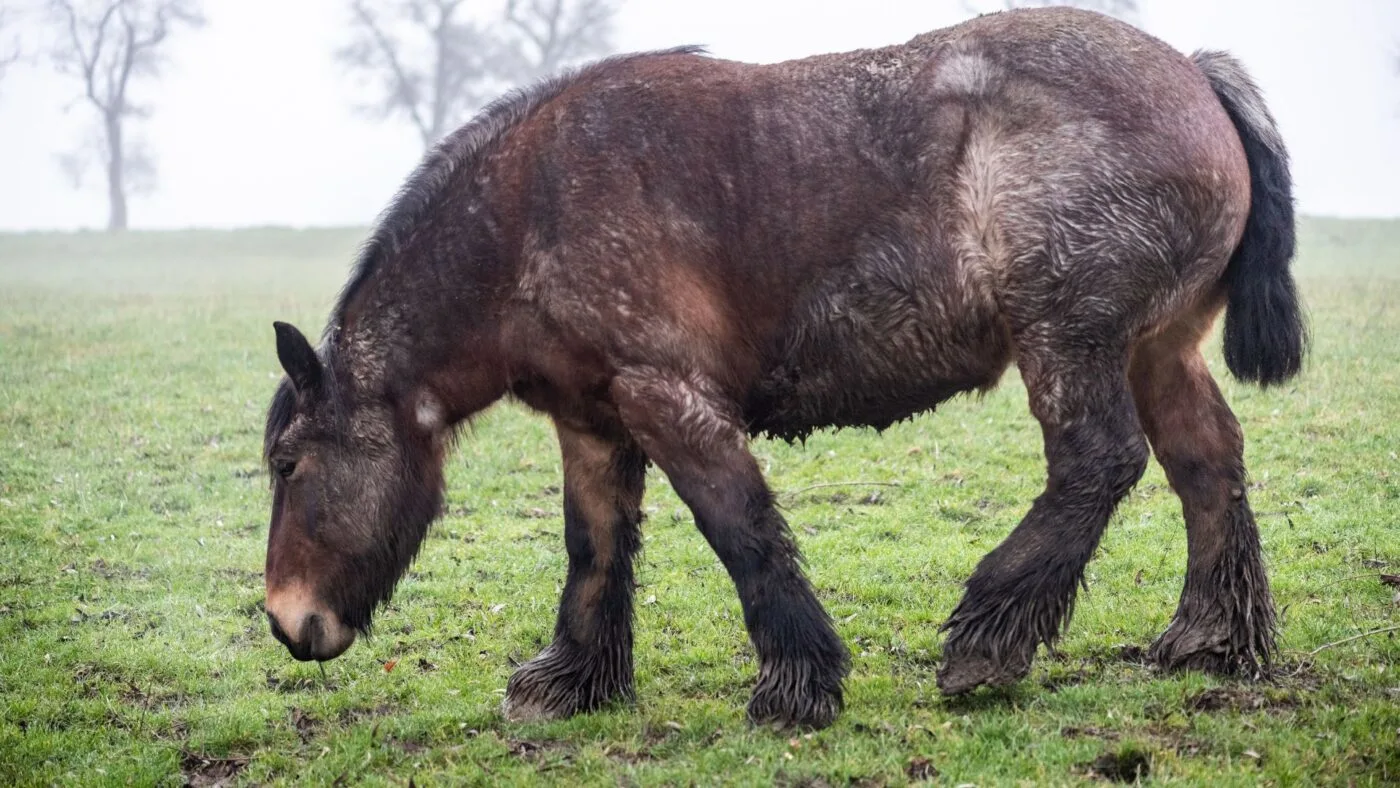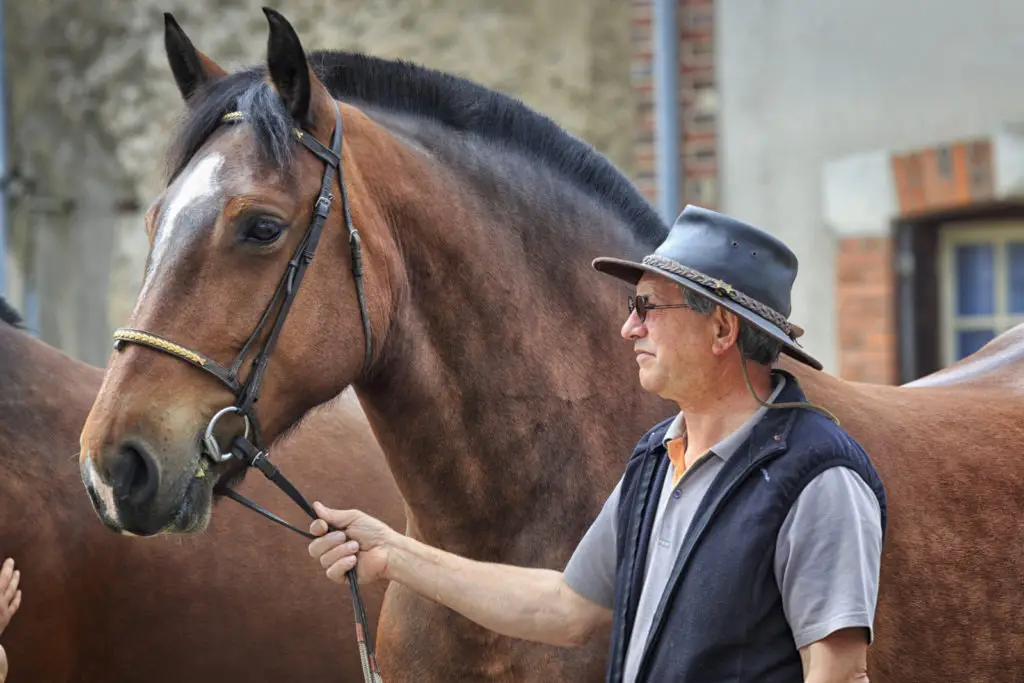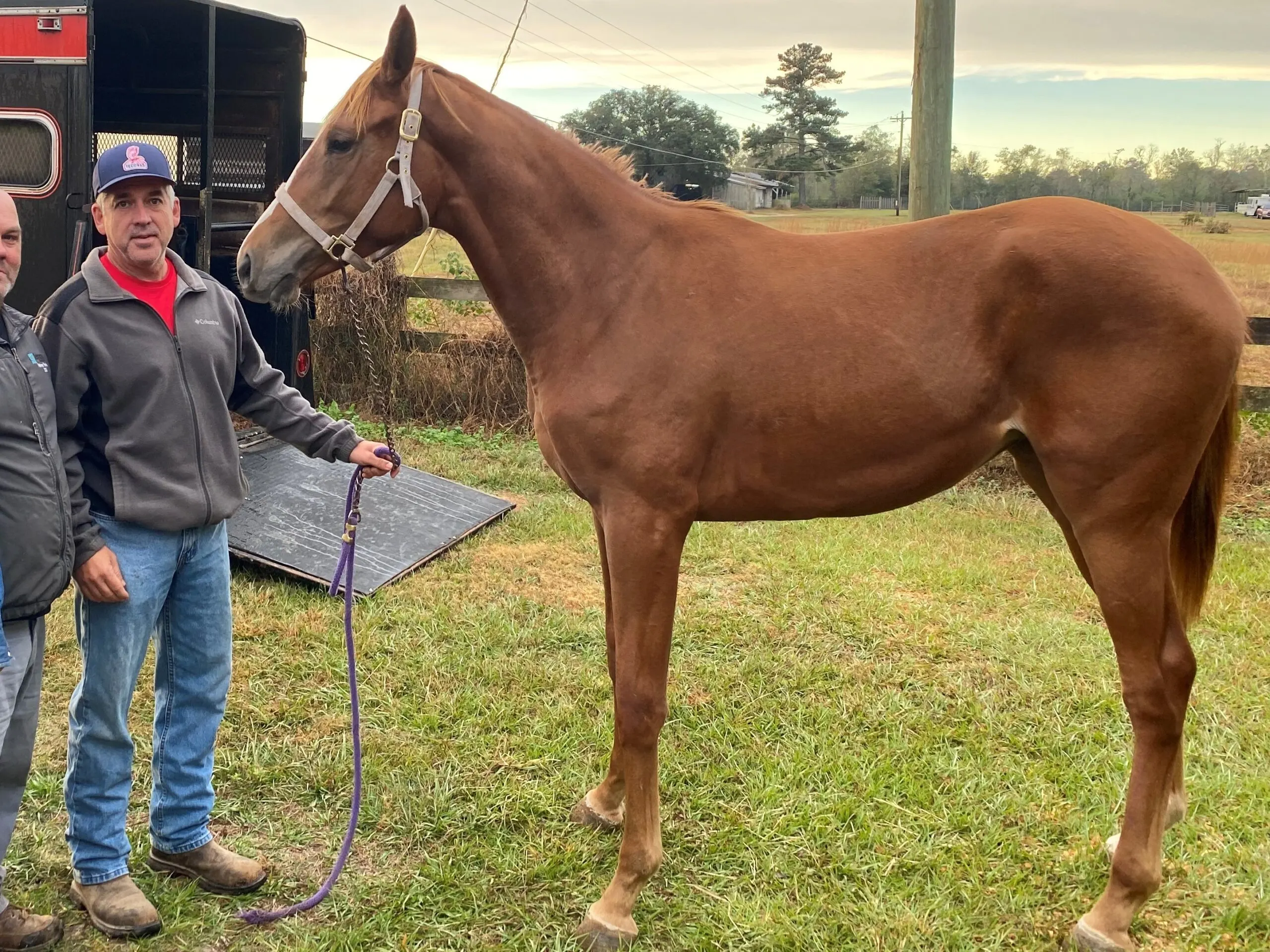Last updated: January 11, 2024
Did you know that the Ardennes horse, one of Europe’s oldest draft breeds, was a favored steed of both Julius Caesar and Napoleon for its remarkable strength and endurance? The Ardennes horse breed originated in Europe and developed quickly into an indispensable animal.
The modern Ardennes stands between 15 and 16.3 hands tall and weighs close to 2,000 lbs. All colors are accepted for registration except Piebald. Ardennes horses have a calm temperament, are well-mannered, and are willing learners. In this article, I’ll share insights into the Ardennes horse, a breed known for its powerful body and gentle temperament.
Drawing from my years of experience with horses and extensive research, we’ll explore the unique characteristics that make the Ardennes an exceptional breed. Whether you’re a seasoned horse enthusiast or simply curious about this historic breed, join me in uncovering the intriguing aspects of the Ardennes horse.

Ardennes is an ancient horse breed.
Ardennes are one of the oldest horse breeds from Europe and were strategically used in battles by both Ceasar and Napoleon.
During the Roman army’s trek across Europe, their scribes recorded a lot of useful information, including the height of the Ardennes, which at the time was only 14 hands.
The Ardennes breed developed into a powerful compact draft breed. It is well muscled and has good quality conformation. Ardennes exude power, they are a powerfully muscular compact draft breed.
Ardennes horses started small but evolved.
Height
The Ardennes began as a small horse, only 13 hands tall. Through the ages, the Ardennes were crossbred with taller horses, such as Barbs and Arabians, to add height and refinement. The cross-breeding increased the height of the Ardennes without sacrificing their thick bones or muscular bodies. The height of today’s Ardennes are:
- Stallions:- 15hh to 16.3hh
- Mares:- 14.2hh to 16.2hh

The Ardennes Society only excludes one color.
Colors
The Ardennes Horse Society in England permits all colors for registration except part-coloured (piebald/skewbald). Stallions are not allowed to have any white markings on their head.
Mares are allowed a little white below the fetlock and on their head but nowhere else. The most common colors you find in Ardennes horses are bay, roan, chestnut, and palomino. A black Ardennes is rare and not accepted in some registries.
Ardennes are big-boned horses.
Conformation
The Ardennes is thicker than other draft horses, but because he is put together so well, his action is typically free, animated, and straight.
Head
These horses have expressive heads with intelligent expressions, straight profiles, and large, pronounced eyes. Their ears are typically small and point forward, and their nostrils are large.

Neck
Stallions have a fully arched crest, and the length of their neck is in proportion and well set.
Body
Their body exudes strength and power. His chest is broad and deep, and his back is short with powerful, very muscular loins. The hindquarters of the Ardennes horse are heavily muscled, large, and full.
Limbs
An Ardennes horse has long shoulders and short but very muscular legs with clean-cut tendons. Light feathering adorns the lower legs of this breed, which may cover their round feet that are smaller than might be expected. Ardennes has strong, good-quality hoofs.

Ardennes have a pleasant temperament.
Temperament
Temperament is the general demeanor of a horse; however, animals are individuals, and their environment affects their personality. But the temperament of a horse breed is the general personality one can expect.
Ardennes horses typically have a gentle nature and are people-oriented. They are gentle giants that are intelligent, patient, and strong with common sense.
The temperament of this breed is much like other draft breeds. They are docile, well-mannered, and willing learners. Their tolerant and mild character is perfect for beginners or advanced horseback riders.
Ardennes are powerful and have exceptional endurance.
Working horse
These are strong horses that can work long and hard. It’s believed they inherited their stamina from their Arabian ancestors and strength from the Belgians. They want to please their owners and are willing to work hard to complete a job.
The harsh terrain of the Champagne-Ardenne region made the Ardennes fierce workers. Their intelligence, strength, and docile nature make them the perfect horse for trail riding or working a small farm.
Ardennes are “easy keepers”
Housing and Feeding
The breed is hardy and can handle cold weather. If they are kept outside, it’s essential to keep an eye on the skin around their feathers. The area below the feathers is prone to developing skin irritation in all horses with this characteristic.
Ardennes are easy keepers, which typically means the animal can thrive on grass and hay. However, if you intend to work your Ardennes, you may need to supplement its diet. Always monitor their weight and adjust their feed when necessary. If you have any concerns, contact your veterinarian.

Ardennes horses were used by Julius Ceasar.
History
Ardennes horses are believed to be a descendant of the Northern European Forest Horse, sometimes referred to as the “Solutré Horse,” and is the oldest draft breed in Europe.
During the Gallic Wars, Julius Caesar used these animals in his heavy cavalry units, and Napolean relied on them when he invaded Russia. The knights of the Middle Ages, with their heavy armor, rode these strong steeds into combat.
When these horses weren’t carrying a warrior to battle, they were pulling carts and plowing fields. From the Roman Galic wars in Europe to the 19th Century, this breed was used in warfare and farming.
The Ardennes were bred to other breeds, like the Percheron and Belgium, to create a bigger, bulkier horse. In parts of France, the horses are still used to work the land, pull carriages, and tree-felling.
Champagne-Ardenne is the region where the Ardenne breed originated and derived its name. It is located near the French, Belgium, and Luxembourg borders and is known for its small farms and champagne.
Champagne-Ardenne is also where Dom Pierre Pérignon, who discovered how to make champagne sparkle, was born. The horses are still used in the area for waste collection purposes and for tilling the land in the Champagne vineyards.
Ardennes helped establish many horse breeds.
Foundation for other horse breeds
Ardennes horses have the physical traits of a well-made horse coupled with a pleasant temperament. Because of these traits, Ardennes has been used as a foundation for many other horse breeds. Such as:
- The Baltic Ardennes
- The Russian Heavy Draft
- The Swedish Ardennes
- The Auxois.
- The Sokolsky horse
- The Trait Du Nord
Ardennes horses are useful in many ways.
Ardennes horses are used for therapeutic horseback riding, competitive driving, farming, trail riding, and consumer meat.
Therapeutic horseback riding
Ardennes makes an exemplary therapeutic riding horse. Therapy horses provide an outlet for children and adults who have special needs or individuals who might not otherwise respond to traditional therapies.
Ardennes are excellent candidates to be a therapy horse because:
- they are strong horses with good conformation;
- they have a pleasant temperament, and they are calm, kind, and people-oriented;
- They are patient and have tolerant personalities;
- They have common sense, are easy to train, and are willing to work;
- They have a natural, clean gait and move with ease;
- they don’t spook easily and will remain calm when exposed to unexpected or new things.
Competitive driving
In general, competitive driving is a horse pulling a cart or wagon. However, there are a lot of different classes of competition. But there are several of the matches under this general umbrella that Ardennes fair well in, such as:
- Working Harness is a single or team of horses, that are used in harness for working purposes, such as plowing.
- Combined Driving is equine eventing in harness. The competition has three phases: dressage, marathon, and cones. This event challenges the horse and driver’s stamina, athleticism, and trust.
- Draft Horse Showing is strictly for draft breeds. Drivers have to follow a pattern for the class and the drivers and horses are judged.
- Draft Horse Pulling is a draft horse competition that involves pulling a weighted sled. A horse or team of horses that move the heaviest weight the furthest wins. These horses are matched against each other by weight class.
The Ardennes horse is designed for pulling; in fact, the breed is often called the living tractor.
Farming
Some modern farmers are turning back the clock and using traditional ways to farm. These methods have a less adverse impact on the environment. And one approach is to use horses to pull their farming implements and work around their farms.
Ardennes are used in France and other places for plowing, sowing seeds, and haymaking. The horses are also used to pull equipment with revolving parts and gears, thereby transferring to operate machines.
Horses cause less damage to soil structure and flora and fauna. They can be used in sites that are sensitive such as ancient woodlands, ancient meadows, and archaeological sites.
Horses can also be used in low areas or when the land is too wet for heavy machinery. Additionally, because Ardennes has sound footing, it can be used on steeper and less open sites than tractors.
Trail riding
Ardennes horses make great trail riding companions. They are surefooted and don’t spook easily. They would be a good fit for any level rider.
Consumer meat
Horse meat is a common protein in some European countries. Because the Ardennes is a big muscular horse, it is a good source of food. That’s as far as I feel comfortable going on this topic.
Conclusion
In summary, the Ardennes horse, with its rich history and versatile capabilities, stands as a testament to the enduring qualities of strength, resilience, and gentle temperament. This breed’s remarkable journey from ancient battlefields to modern-day farms and therapeutic settings showcases its adaptability and enduring appeal.
Whether you are an equestrian enthusiast, a history buff, or simply someone who appreciates the majestic beauty of horses, the Ardennes breed offers a fascinating glimpse into the world of equine excellence. Its robust build, calm demeanor, and willingness to work make it an ideal choice for various equine activities.
Call to Action
If you’re inspired by the Ardennes horse and want to learn more or even consider bringing one into your life, I encourage you to explore further. Connect with local breeders, visit farms, or join online communities dedicated to this magnificent breed. The journey with an Ardennes horse is not just about ownership; it’s about becoming part of a rich historical tapestry.
Additional Resources:
For more information on the Ardennes horse and other breeds, check out the following resources:
These resources offer a wealth of knowledge and connections to deepen your understanding and appreciation of the Ardennes horse. Embrace the journey, and may it bring you joy and fulfillment.
Related Articles:
- To read about Clydesdales, click here
- To read about Percherons, click here
- 10 Differences Between Ponies and Horses: Size, Breeds …
Meet Miles Henry
An avid equestrian and seasoned racehorse owner, Miles Henry brings his extensive experience to the equine world, proudly associating with the AQHA, The Jockey Club, and various other equine organizations. Beyond the racetrack, Miles is an accomplished author, having published various books about horses, and is a recognized authority in the field, with his work cited in multiple publications.
🔗 Connect with Miles:
Twitter
Facebook
YouTube: Check out race highlights, horse care tips, and more!

